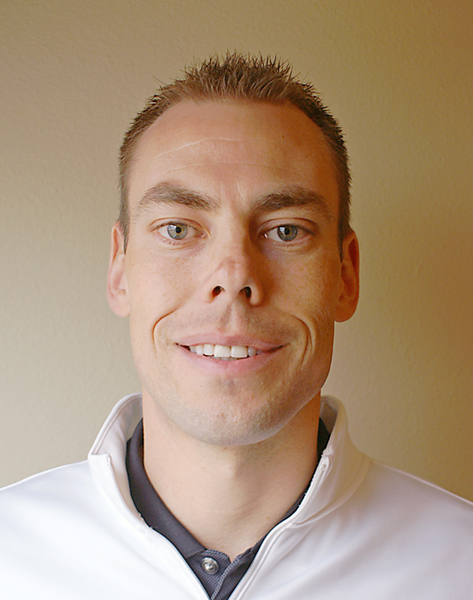Ryan Anderson lives the science behind soil fertility, providing his northwest Minnesota customers with the tools and expertise needed to achieve balanced crop nutrition on their acreage

Having good people around me — that’s what makes us successful,” says Ryan Anderson, Sales Manager of CHS Ag Services in Warren, Minnesota. “Our sales agronomists are the best in the business.” Anderson serves as a valuable resource for his 21-person sales team, with nearly 15 years of experience under his belt.
Raised on a family farm in Argyle, Minnesota, Anderson attended North Dakota State University, where he double-majored in crop and weed science and plant protection. His first job as a sales agronomist was with Agriliance, then a company jointly owned by CHS and Land O’Lakes. When CHS became the sole owner of the company in 2007, Anderson remained, and in 2010 became the Sales Manager of Ag Services.
He understands what is expected of sales agronomists, as well as the responsibility of providing them important resources. “I know that sales agronomists need a resource that can provide answers in a hurry,” Anderson says. “I need to be available all hours of the day, especially in the spring. I may not be in direct contact with growers anymore, but I do a lot of different jobs to make sure farmers get their crop in — from running parts to different areas to managing the fertilizer going in and out of our location.”
This commitment to helping farmers produce their best crops is not unique to CHS. Three years ago, the leadership team at CHS looked at the business strategically, paying close attention to the growth curve of fertilizer use. With numerous acres coming out of the Conservation Reserve Program and corn acres continuing to rise, fertilizer use was expected to be on a steep incline. CHS developed a plan to replace older structures and expand its capacity, all in an effort to keep up with the rising demands for fertilizer from the company’s customers.
“Usage rates are going up every year,” explains Anderson. “And with our condensed springs — doing everything within about a two-week time frame — it’s difficult to get all of the product that we need in one place at one time. We needed a better infrastructure to help us handle that.”
A few years ago, CHS created a five-year infrastructure expansion plan, which includes investing in three new retail fertilizer plants (as was done in Minnesota this past year), another in 2015, and possibly another in 2016. The three new fertilizer plants include a 24,000-ton hub plant and greenfield site, a 6,000-ton plant and a 3,000-ton plant. This expanded capacity helps CHS provide customers with the product they need when they need it.
Anderson suggests customers trust CHS for more than the retailer’s ability to provide product. CHS also educates growers about the global landscape surrounding the fertilizer market, interpreting what changes around the world may affect fertilizer use, price and availability in Minnesota.
“Farmers are curious about fertilizer,” Anderson continues. “They want to know about the global markets, so part of my job is paying attention to what is happening around the world, with the import and export markets, and how all of that will affect fertilizer use here. It’s important for us to be very transparent with our farmers about the fertilizer market. It helps us become a trusted resource for that type of information.”
With a close eye on the fertilizer market and increased capacity to supply fertilizer at the right time, it’s no surprise that CHS is leaned on heavily by farmers navigating difficult spring weather in Minnesota. A short spring often pushes farmers to apply up to one-third of their fertilizer in the fall, including phosphate and a portion of nitrogen. This helps make the short spring more manageable for farmers and retailers.
CHS also helps its customers make the seemingly unending decision-making process easier each year. There is an emphasis on building relationships at CHS, by asking the right questions, being good listeners, and staying humble and grounded.
“The biggest thing we see this time of year is farmers coming in and wanting to be assured that their crop plan is right,” says Anderson. “We answer a lot of questions about whether they are doing the right thing, which ultimately affects fertilizer use. We also are seeing trends in high-yield corn and spring wheat, in which soil fertility becomes increasingly important.”
Fertilizer use is changing, and retailers do not only have to keep up with the changes, but also get ahead of the curve so they can continue to meet customers’ expectations. According to Anderson, fertilizer use in Minnesota is showing a steady growth curve. In fact, fertilizer sales are up 30 percent in the past five years at CHS. While some of that growth can be attributed to gaining market share, an additional area of growth is with farmers who want to achieve higher yields and are using more fertilizer.
Despite these constant changes, the retail industry fits Anderson perfectly. “Once you’ve helped farmers get their crops in and make their yield goals, it’s one of those things you love to be a part of every year,” Anderson concludes. “Being in a group of people who have that same common goal is great. All of the relationships that I’ve been a part of, all of the great people I work with — it makes this job so fun.”